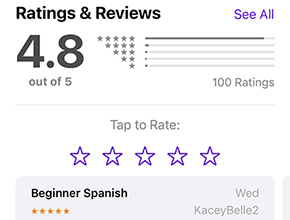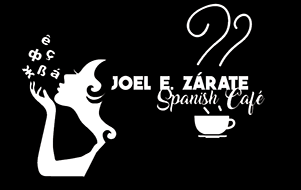Unit 06 Grammar Lesson:
Gustar, encantar y fascinar
In this grammar unit, we will focus on the verb gustar
In Spanish, most verbs are regular. They follow a similar conjugation pattern, but we have a few verbs that work differently, and gustar is one of them.
The verb gustar means “to like”. We use it when we mean that we enjoy something. For example, I like ice cream, I like chocolate, I like pancakes, I like to travel, I like to go the beach, and so forth. Now, when you want to express that you really love something, we use the verb encantar or the verb fascinar. Fascinar is a little bit more intense, but encantar is more common and these three verbs have the structure.
One difference between Spanish and English is that in English we can use the verb to like with people when we mean that we find that person nice to be around, nice to hang out with, but in Spanish gustar is not used in that fashion. In Spanish gustar with people mean that you find that person attractive and it almost sounds like we are hitting on that person. So, be aware of that difference between Enlish and Spanish!
Now, gustar doesn’t conjugate in the same way as other regular verbs. With normal verbs, we can have a subject or subject pronoun (we usually leave out the subject pronoun because the verb conjugation indicates who we are talking about).
For example:
Como verduras (yo como verduras) = I eat vegetables.
Toma vino (ella toma vino) = She drinks wine.
Limpias la casa (tú limpias la casa) = You clean the house.
The verb gustar is simply either singular or plural to agree with the noun after it and it also uses an indirect object pronoun to indicate the person. Don’t worry about the term indirect object pronoun for now, just getting exposure to the verb gustar is enough for now.
For example
I like ice cream (singular) = me gusta el helado.
I like doughnuts (plural) = me gustan las donas.
So, as you can see, the only difference is that the plural form is gustan with an -n at the end.
Singular = gusta
Plural = gustan
Me is the indirect object pronoun. So, in Spanish we basically say:
Me like ice cream.
I know it sounds funny, but it makes it easy for you to remember at the beginning. Some teachers prefer to use the phrase to be pleasing to someone to provide a literal translation of gustar. So, that example would be:
Ice cream is pleasing to me.
So, you decide what makes it easier for you. Once you get exposed to many examples in context, I can guarantee you that you won’t think in terms of me like ice cream or ice cream is pleasing to me. You’ll simply think in Spanish.
Now, when you have an infinitive (a verb not conjugated) after gustar, then we use gusta (the singular form).
For example
I like to travel = me gusta viajar.
I like to cook = me gusta cocinar.
I like to learn (learning) Spanish = me gusta aprender español.
Finally, it is common to add emphasis especially when two people or a group of people are contrasting or emphasizing what they like or dislike by starting with a mí, a ti or a él, a nosotros, a vosotros, a ustedes or a (name of the person or group of people).
Gustar Structure
I like:
Me gusta or me gustan.
For contrast/emphasis: A mí
You (singular, informal, tú) like:
te gusta or te gustan.
For contrast/emphasis: A ti
He/She/You (singular, formal, usted) like(s) =
le gusta or le gustan
For contrast/emphasis: A ella, a él, a usted
We (nosotros) like:
nos gusta or nos gustan
For contrast/emphasis: A nosotros
Vosotros (you guys, spain)
os gusta or os gustan
They like, you guys like (ellos, ellas, ustedes)
les gusta or les gustan
Me, Too & Me, Neither (don’t either)
We use the short phrases a mí, a tí, a usted, a ellos, and so forth along with también (too) or tampoco (neither, don’t either) to express that we do too or we don’t either.
Examples:
Me, too (so do I) / Me, neither (I don’t either)
A mí también / a mí tampoco
You, too / You don’t either
A ti también / a ti tampoco
Example in Conversation:
Joel: Milton, ¿a ti te gusta el helado?
Milton: Sí Joel. A mí me encanta el helado. ¿A ti te gusta el helado, Joel?
Joel: Sí, Milton. A mí también. A mí me encanta el helado de chocolate.
Milton: A mi también.
Joel: ¿A ti también?
Milton. Sí. A mi también.
I hope this lesson is helpful.
Thank you for listening and reading!
Before you go...
Please give us 5 purple stars on Apple podcast or on Spotify if you haven't done so.
If you are using an iPhone or iPad, click here to go the Apple Podcast App, scroll down until you find the ratings and reviews where you can give us 5 purple stars.

Once you give us 5 stars, you'll see that they all become purple and you get the message, "Rating Added, Thank you!".

This is how you can help me to grow if you would like me to continue making this podcast.
